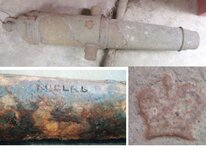R
rtdavey
Guest
Can anyone tell me what the markings on this cannon mean, or anything about the cannon. A friend from China sent me pictures and asked me to find out whatever I can. Any help would be greatly appreciated. Thanks, Robert.




